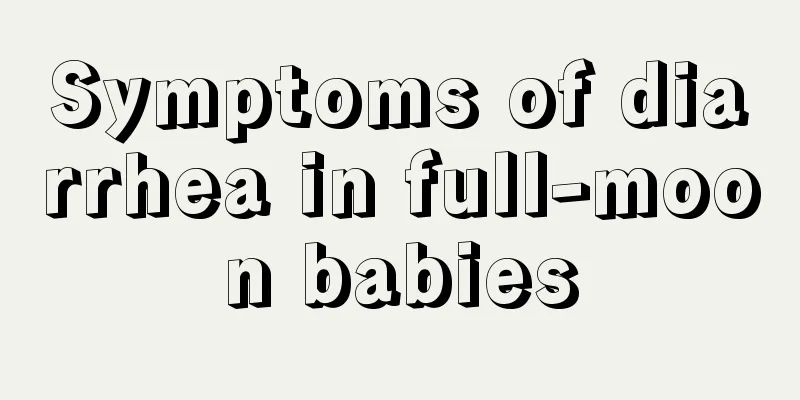How to identify impetigo

|
As we all know, impetigo is a common contagious skin disease. Precisely because of its contagiousness, it is not recommended to have too much contact with others after suffering from impetigo. So what are the symptoms of impetigo? How is impetigo diagnosed and treated clinically? What kind of discomfort will the body experience after getting impetigo? What should you pay attention to during treatment? Let's find out together. Impetigo is a relatively common skin disease. It is contagious and can be transmitted through contact. To identify impetigo, you need to understand its symptoms. This disease is divided into bullous pustulosis and non-bullous pustulosis. The two diseases have certain similarities and are prone to appear on the face and limbs. After blistering, the blisters will gradually increase in size. At first, the pustules are clear, but later become turbid. Patients may experience symptoms such as itching.How to identify impetigo This disease is prevalent in summer and autumn, and is more common in children aged 2 to 7 years old. The clinical manifestations of the two types are as follows:
It often occurs on exposed parts such as the face and limbs. Initially, there are scattered blisters. After 1 to 2 days, the blisters rapidly increase in size, and the blister fluid changes from clear to turbid. Pus is deposited at the bottom of the blisters, forming a crescent-shaped pus accumulation phenomenon, which is one of the characteristics of this type of impetigo. The blister wall is thin and loose, revealing an eroded surface after rupture, and forming a yellow pus scab after drying. Sometimes new blisters occur around the scab and are arranged in a ring, which is called annular impetigo. Patients feel itchy, but generally have no systemic symptoms. 2. Nonbullous impetigo It often occurs on the face, around the mouth, around the nostrils, on the ears and on exposed parts of the limbs. It manifests as thin-walled blisters on an erythematous basis, which quickly turn into pustules with a noticeable red halo around them. After the pustule bursts, the pus dries and forms a thick honey-yellow scab, which continues to expand around and can merge with each other. The patient feels itchy and scratching often causes bacteria to be spread to other parts of the body, resulting in new rashes. The scab will fall off on its own in about a week and heal without leaving any scars. Severe patients may suffer from complications such as lymphadenitis and fever.
Nonbullous impetigo is often caused by Staphylococcus aureus and occasionally by group A beta-hemolytic Streptococcus. Bacteria adhere and invade the skin after minor trauma, leading to infection. Bullous impetigo is caused by Staphylococcus aureus and can occur on intact skin. The bacteria can produce and release exfoliative toxins, which bind to desmoglein 1 on the cell surface, causing loss of adhesion between epidermal cells, cell loosening, and bullous formation. treat 1. For patients with extensive skin lesions or accompanied by fever and lymphadenitis, systemic application of sensitive antibiotics is recommended, and the antibiotics are selected based on the drug sensitivity results. 2. For local treatment of blisters or pustules, after local disinfection, aspirate the blister fluid and apply neomycin ointment, mupirocin ointment or fusidic acid ointment externally. |
<<: How to treat hemorrhoids in children
>>: Is thrush contagious to other babies?
Recommend
How to deal with supernumerary teeth in children
Supernumerary teeth are also called extra teeth i...
What should I do if my child has paronychia?
Paronychia is a very common disease. This disease...
Is hand tremor in teenagers due to calcium deficiency?
Hand tremors in adolescents are not necessarily c...
Baby sleeping with tongue out
When taking care of their babies, many parents wi...
What should my baby eat if he has a cold and cough?
good In daily life, cold is one of the very commo...
What to do if a child has a fever caused by indigestion?
I believe everyone has already understood the sit...
What to do if your baby has a bad taste in his mouth
Sometimes, if you smell carefully, you will find ...
How to help babies digest food
When children are very young, they either eat bre...
How to remove the red spots on babies caused by mosquito bites
Children's skin is relatively delicate. In th...
How do girls' bones develop?
Every girl wants to grow tall, at least over 1.65...
Psychological problems of children of divorce
The psychological problem of divorced children is...
What causes white spots on children's fingertips?
It is often found that some children's finger...
What should I do if my child doesn’t like to talk?
When talking about children, the first thought th...
The newborn's navel is stuck with gauze
When the baby is just born, the umbilical cord is...
What to do if your child has conjunctivitis
Conjunctivitis is a relatively common eye disease...









